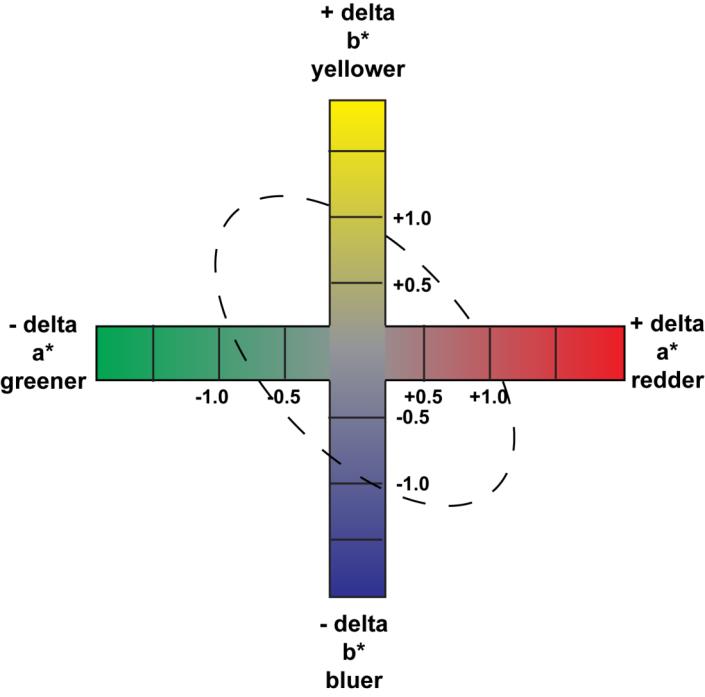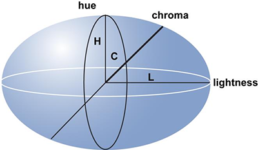Color Consistency with the CMC Tolerance System
A color tolerance is a limit to how big the difference in color between a sample and standard is allowed to be for the sample to be considered acceptable. Tolerance values should correlate to the human eye so that color is both visually and numerically acceptable. The CMC tolerance system is recommended because the ellipsoids in this system are based on the color discrimination threshold of the human eye. This system was established to address the weaknesses of other tolerance systems and improve accuracy.
Ellipsoidal Tolerance System

The CMC tolerance system is often used for high accuracy pass/fail assessments and quality control inspections within manufacturing environments to ensure standards are met. This is because its formulae more closely aligns with how the human eye sees color, adjusting to greater shifts in lightness than in chroma and hue.
Calculating the lightness, chroma, and hue attributes of the standard color, its formula creates an ellipsoid around this standard within the color space. Color that falls inside this ellipsoid is considered acceptable, while color that falls outside of this ellipsoid is rejected.
The size and shape of the ellipsoid are dependent on a number of factors including where the standard color falls within the color space, the defined ratio between lightness and chroma attributes (l:c), and the established commercial factor (cf). The cf is the tolerance value, or limit to how big the difference in color between a sample and standard is allowed to be. If the cf is 1.0, for example, then the total color difference (ECMC) between the sample and standard would need to be less than 1.0 to pass inspection or be considered acceptable. This helps maintain color consistency and accuracy throughout the supply chain and from one batch of material to the next.
Total CMC Color Difference Formula: ECMC = [(L*/l SL)2 +(C*/c Sc)2 + (H*/SH)2]1/2
Convenient for manufacturers who produce various products, this one tolerance value can be used for a range of colors. Once the commercial factor is established, the ellipsoid can be adjusted in size to ensure each color sample or batch is both visually and numerically acceptable. Comprehensive software programs, such as SpectraMagic NX2, can be used in conjunction with a spectrophotometer or colorimeter to more easily define tolerance values and establish an effective color quality process. Using these tools, tolerances should be reevaluated throughout the manufacturing process and continuously refined to identify the ideal value for your application.
To learn how to implement an effective color quality process within your operations, please contact us.
Like this article? Click here to sign up for our monthly Color Trends & Technology newsletter to stay updated on the element of color, best practices for controlling and evaluating the color of objects, educational seminars, and advanced technology for research and manufacturing environments.
The technological leader in color and light measurement solutions, Konica Minolta Sensing Americas helps organizations formulate, evaluate, and control color to meet product quality and operational goals more efficiently.










